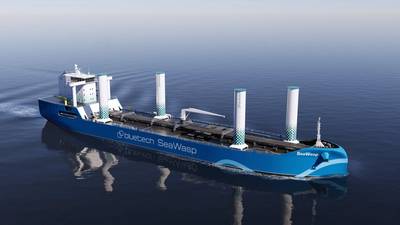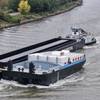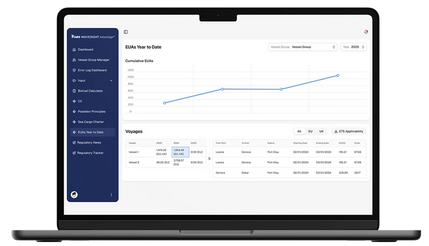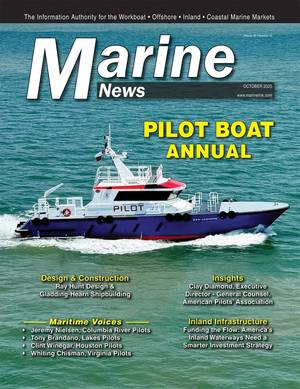Fully Wind-Optimized Tanker Concept Unveiled
Finland-based Bluetech has partnered with NYSE-listed INSW to develop Bluetech’s new ‘SeaWasp’ tanker vessel design, purpose-designed for wind but still practical for INSW MR fleet operations.
With the support of wind-propulsion specialist Norsepower, Bluetech modified its BT50 design to extract maximum forward thrust from two 35-metre Rotor Sails. This resulted in a total savings of up to 876kW of propulsion power on one representative INSW MR tanker route from San Francisco to South Korea – equating to around 597.2MT of fuel per annum.
The design modifications alone are estimated to contribute 104kW or 71.5 MT of the savings, effectively improving the vessel's overall performance by around 13.5% in certain conditions.
The project examined the lower end of the savings potential. For example, on a route from South Korea to Singapore, the SeaWasp saves 185.9MT or 275kW per annum versus a conventionally powered BT50, due to the prevailing wind directions. Keeping such a baseline allowed for a range in the data analysis and ensured that any commercial projections were realistic.
“On routes where wind propulsion offers limited advantage, the inherent efficiency of the vessel’s core design becomes paramount. The BT50 design is itself approximately 12% more efficient than the typical tanker performance profiles in the sample fleet. Our design modifications enhance that efficiency even further,” said Sam Robin, Director of Energy Savings Solutions at Bluetech.
A unique new fin design dubbed ‘blueSURF’ showed significant power saving potential in a computational fluid dynamics (CFD) analysis. “We were genuinely surprised to see such pronounced benefits in power demand, making the fins an additional powerful design modification that improves the case for WASP deployment,” said Juha Hanhinen, Head of Hydrodynamics at Bluetech.
Modifications above the waterline include an aero upper deck and superstructure, as well as semi-enclosed mooring stations to reduce wind disturbance.
The project also examined which Rotor Sails configuration – four smaller 24-metre devices instead of the two 35-metre devices – had the best combination of cost versus thrust. “Each configuration had slightly better performance profiles in different conditions of apparent wind,” said Severi Sarsila, Sales Engineer at Norsepower. Ultimately, the larger pair had a higher potential at the upper end of the savings spectrum and lower overall quoted cost.













